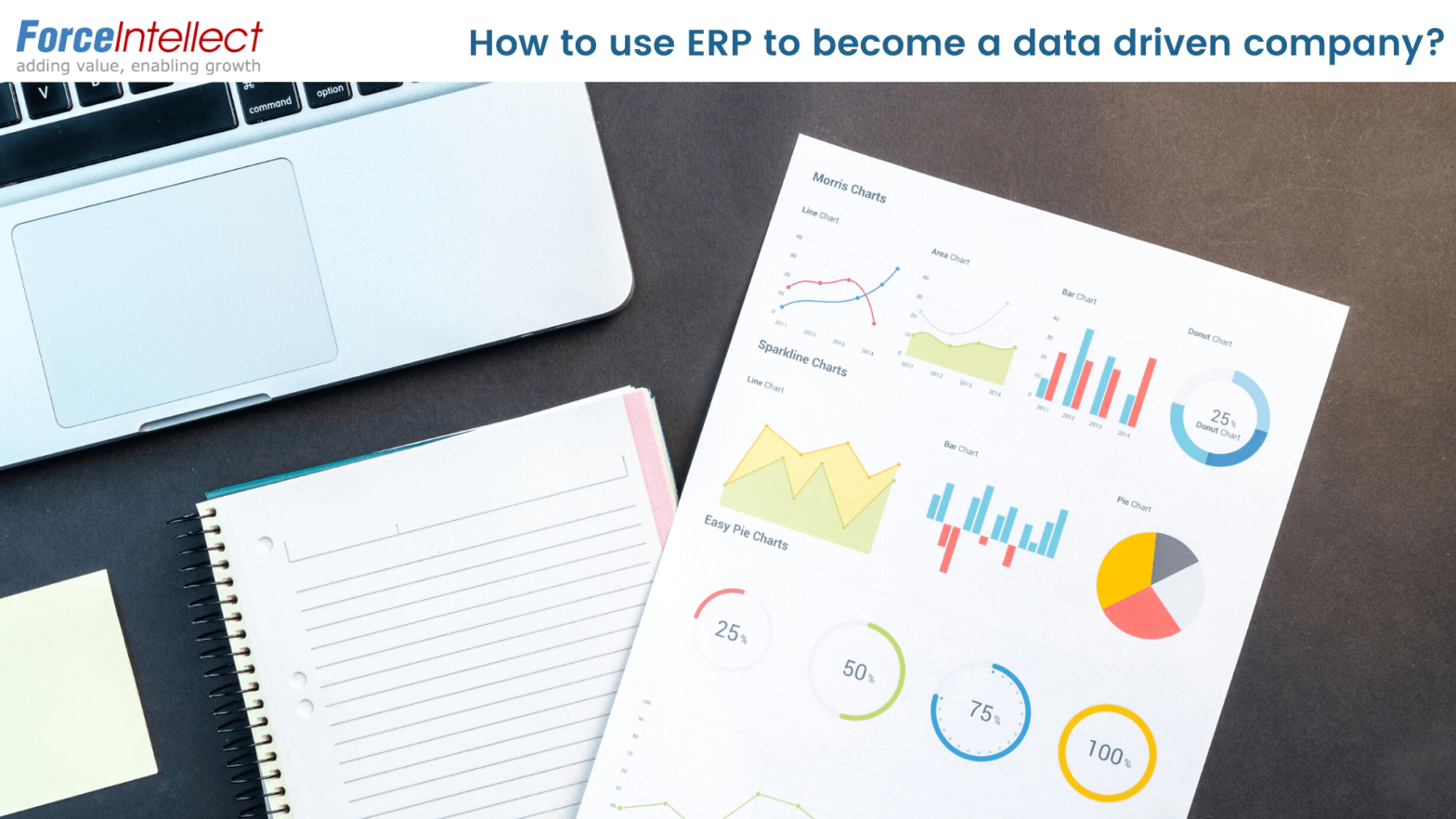How to use ERP to become a data-driven company?
Before we explore how to use ERP to become a data-driven company, let us briefly understand; What is a data-driven company, What are the steps to become a data-driven company and then how to use ERP to become a data-driven company
What is a data-driven company?
Organizations that gather digital data across all areas of the business are able to use a combination of data, analysis, and insights to make decisions. They use data to understand what happened, analyze why it happened and determine the next steps. These companies make strategic decisions based on data, across all levels of the organization.
What are the steps to becoming a data-driven company?
Becoming a data-driven organization involves gathering relevant data across all business areas. The process includes creating awareness about the importance of data, developing a mindset to use this data to identify patterns and trends across important areas of the business, then creating a culture of making data-backed, fact-based decisions, at all levels across the organization, from top management to the junior-most employee of the organization.
- Gather data across all crucial business functions in digital formats.
- Create a single source of accurate data with the ability to incorporate real-time updates. This ensures, most updated consistent information is available across the organization
- Store data in a central location to be accessible anytime from anywhere
- Create user roles & hierarchy & to provide only requisite data to concerned people
- Create simple interfaces, user-friendly, reports, graphs and to easily understand data
- Provide facility to slice and dice data to carry out multidimensional analysis
- Train employees how to continuously monitor and analyze data against KPIs
- Use a common vocabulary across the organization to understand & interpret data
How to use ERP to become a data-driven company?
An ERP integrates disparate systems from multiple locations of an organization into one single shared database. Information is captured in real-time in digital format, saved in a single central location and is easily accessible anytime, anywhere.
With ERP you capture data in digital format. This prepares the digital backbone of your company. With the help of such important data gathered over a period of time. you create the Corporate IQ. Your ERP is thus, a powerhouse of information.
You can leverage ERP to monitor critical, timely information and make it available to the concerned people to make data-based decisions. E.g. Stock reaching reorder point, delivery delayed contract renewals, price fluctuations, etc.
Moreover, you can use ERP to automate repetitive manual processes and save significant time for your workforce. E.g. Tasks such as Online Order Approvals, Invoicing, Statement Generation, Purchase Order Follow-up, etc
Employees have to spend less time compiling manual reports, as ERP can generate reports based on triggers such as the first day of the month, specific weekdays, specific conditions met and so on. Thus, you get appropriate reports and are able to identify problem areas, bottlenecks, at an early stage to take remedial actions. You can use this data to improve the performance of processes and functions across the organization.
ERP provides numerous cost analysis, process analysis reports for users across all levels of the organization. Set user roles and authorities to send the right reports to the right people. This will help them to identify patterns, trends, and analyze the performance and work on more strategic tasks like identifying areas of improvement.
Leverage your ERP to set up workflows and business rules to monitor specific conditions and trigger reports or alerts based on whether specific criteria are met or not. These scheduled alerts and notifications can be sent to the concerned departments or people via the company intranet, email, SMS, mobile apps, etc.
Specific examples of how you can use ERP to create alerts and workflows to drive decisions and actions across the organization with little or no manual intervention.
1. Publish weekly/monthly performance reports: You can use ERP to publish weekly & monthly performance reports to relevant people through email or apps. Later on, you can have meetings with relevant stakeholders to discuss unusual data with them. This can help you in making your meetings more productive and driving your organization by objectives.
2. Customer Payments Overdue: ERP sends reminders to customers who have payments outstanding after a specified due date.
3. Unapproved Purchase Orders: ERP triggers email authorization requests to the concerned authorities if the Purchase orders are pending for approval after a certain amount of time has elapsed since they were raised.
4. Inventory approaching reorder level: When you have set the inventory reorder limit, ERP fires a notification to the Stores department executives to generate a Purchase Request
5. Renewal of Contracts: You can get reminders for renewal of AMC Contracts on a particular date, prior to the date of expiry of the contract. Similarly, you can also set notifications for important Certification Expiry, Regulatory Compliances, etc. E.g. Expiry of Calibration certificate for Tools
6. Delay in Deliveries: ERP can generate notifications for the delay in delivery of critical items to the concerned people within the organization as well as the suppliers.
Why become a data-driven company?
Data-driven companies are able to improve their systems, processes, and functions based on data insights & reports. Companies will be able to forecast better and make better predictions in terms of their business operations. Thus, they are able to improve their efficiency and productivity. This will help organizations to increase their revenues and profitability over a period of time.
Request a Demo of Spectrum ERP to take one step further to becoming a data-driven company.

